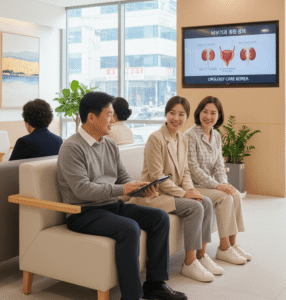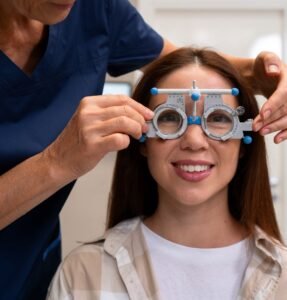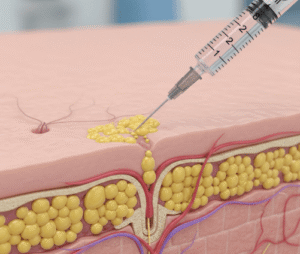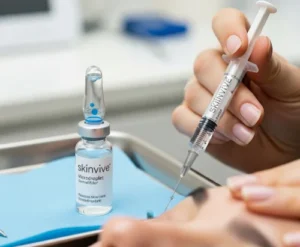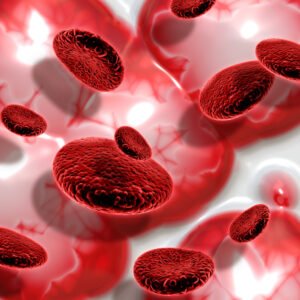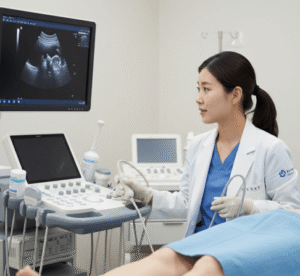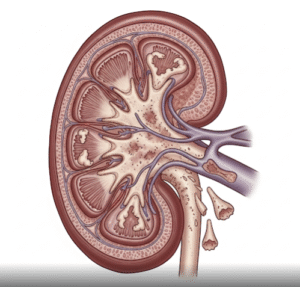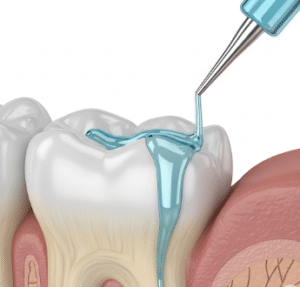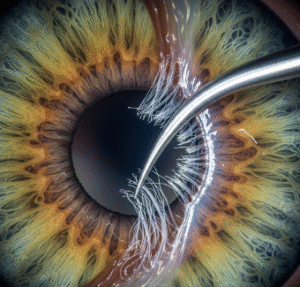What it is
- ➤ Hysteroscopy is a minimally invasive diagnostic and sometimes therapeutic procedure that allows doctors to directly visualize the inside of the uterus (endometrial cavity) using a thin, lighted tube called a hysteroscope.
- ✦ The scope is inserted through the vagina and cervix, so no abdominal incisions are required.
- ➟ It can be done for diagnosis alone (diagnostic hysteroscopy) or combined with minor procedures (operative hysteroscopy).
- Important: Hysteroscopy is widely used in Korea for both women’s health screening and fertility management.
Why it’s done
- ➤ Common reasons include:
- ▪ Investigating abnormal uterine bleeding.
- ▪ Detecting/removing polyps, fibroids, or adhesions.
- ▪ Evaluating causes of infertility or recurrent miscarriage.
- ▪ Locating or removing a lost IUD.
- ▪ Following up abnormal imaging or biopsy results.
- ✦ Benefits:
- ✅ Direct visualization = accurate diagnosis.
- ✅ Can combine diagnosis + treatment in a single session.
- ✅ Faster recovery compared to open or laparoscopic procedures.
- ⟶ Limitations:
- ▪ Requires specialized equipment and training.
- ▪ May need anesthesia depending on complexity.
- Bold takeaway: Hysteroscopy is often the gold standard for assessing intrauterine conditions.
Alternatives
- ➤ Transvaginal ultrasound (TVUS): Non-invasive, good for structural overview, but not definitive.
- ✦ Sonohysterography (saline infusion ultrasound): Improves visualization of the cavity but cannot treat issues.
- ➟ MRI or CT: Useful for complex pelvic pathology, but more expensive and less specific.
- Important: Hysteroscopy is unique in being both diagnostic and therapeutic at once.
Preparation
- ➤ Timing: Ideally performed after menstruation but before ovulation, when the endometrium is thin.
- ✦ Pre-procedure steps:
- ▪ Fasting may be required if anesthesia is planned.
- ▪ Take prescribed pain relievers or sedatives.
- ▪ Avoid tampons, sex, or vaginal products 24h prior.
- ➟ Tell your doctor if you:
- ▪ Are pregnant or suspect pregnancy.
- ▪ Have pelvic infections.
- ▪ Take blood thinners or have clotting issues.
- Important: Discuss anesthesia options (local, sedation, or general) depending on complexity.
How it’s done
- ➤ Step 1 – Positioning: You lie on an exam table with feet in supports.
- ✦ Step 2 – Speculum & dilation: A speculum may be inserted; cervix gently dilated if needed.
- ➟ Step 3 – Hysteroscope insertion: The scope is passed through the cervix into the uterus.
- ➤ Step 4 – Uterine distension: Saline or CO₂ is used to expand the cavity for clear viewing.
- ✦ Step 5 – Examination & treatment:
- ▪ Diagnostic: inspect for abnormalities.
- ▪ Operative: remove polyps/fibroids, cut adhesions, retrieve IUD, or biopsy suspicious tissue.
- → Duration: 10–30 minutes depending on purpose.
- What you feel: Pressure or cramping; anesthesia reduces discomfort.
Recovery
- ➤ After diagnostic hysteroscopy:
- ▪ Resume normal activities same day.
- ▪ Light spotting or cramping for 1–2 days.
- ✦ After operative hysteroscopy:
- ▪ Recovery may take 1–2 weeks depending on extent.
- ▪ Avoid tampons, intercourse, or douching for 1 week.
- ➟ Results:
- ▪ Normal → reassurance or continued monitoring.
- ▪ Abnormal (polyps, fibroids, cancer) → further treatment planned.
- ⟶ Seek urgent care if:
- ➤ Heavy bleeding, severe pain, fever, or foul discharge.
- Important: Always attend follow-up to review pathology and treatment outcomes.
Treatment option in Korea
- ➤ Where available:
- ▪ Major university hospitals in Seoul, Busan, Incheon, Daegu.
- ▪ Fertility centers and specialized women’s health clinics.
- ✦ Why Korea:
- ▪ Advanced hysteroscopic technology with high-definition cameras.
- ▪ Same-day packages combining ultrasound + hysteroscopy + biopsy.
- ▪ Minimally invasive operative hysteroscopy commonly available.
- ➟ For international patients:
- ▪ Pre-arrival consultation via email/video.
- ▪ Results delivered within a few days; reports available in English.
- ▪ Packages often include fertility testing or cancer screening.
- ⟶ If abnormalities found:
- ▪ Polyps/fibroids removed during same procedure.
- ▪ Biopsy for suspicious lesions → pathology report guides treatment.
- ▪ Cancer cases referred to multidisciplinary oncology units.
- Important: Korea’s efficiency allows diagnosis + treatment in one trip, highly valued by medical travelers.


